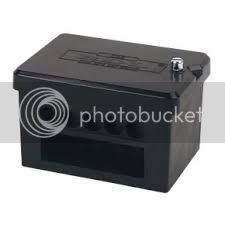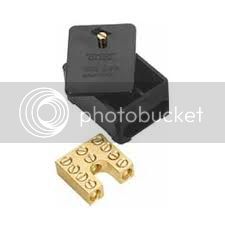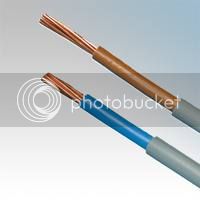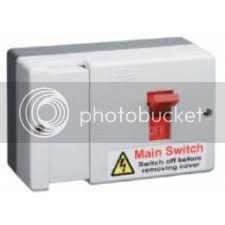I've never seen a problem with removing the seals on a cutout, as long as the meter reader can see work has been done that would require the mains to be switched off they are generally happy. Removing the seals on the meter is a different matter.
Working live is okay in my book also, I have done so for nearly 30 years. Rubber gloves are available for anyone to buy and the use of insulated tools is the norm for most involved with electrical work, follow a few simple rules and you are quite safe.
On the subject.
I quite often get on here with safety driven advice which to some may seem like I'm having a go, but today I'm going to give a little advice but in no way is this advice to be used as a "how to do it".
Each and every electrical installation needs proper design and correct installation.
The subject of supply cable and where to get the supply from is often one that comes up and causes many questions and some confusion.
I wouldn't bother looking for spare ways in the house consumer unit.
"I" would ask a qualified electrician to split the meter tails ( obviously after the meter or the electricity police will come knocking, shame though ! ) and terminate into a service block (also known as neutral blocks or Henley blocks).


Then using a suitable size cable, meter tails( pvc/pvc single core )

terminate into a fused main switch.

From this main switch take a suitably sized cable into a conversion box to make the change to a suitably sized armoured cable running to the workshop ( I'm writing this assuming the workshop is away from the house. With the armoured cable I would run a separate earth or use a 3 core cable so there is a proper earth conductor, I don't like or trust the steel wire armouring.
If you have a built in/on, integral garage type workshop then big T&E ( twin and earth ), cable could be used ).
At the workshop end using a metal consumer unit, this makes for an easy termination of the armoured cable.
Why ? Well in short it gives you the best options for capacity.
There is little point in going for a small supply, granted this is my own opinion.
Getting ever so slightly technical, about the biggest cable you can get into a domestic consumer unit is 10mm and that depends how neat the installation inside said consumer unit is, if you have an older consumer unit then 6mm can be a right pain, ( watch some smart a** come along and say they've done a 16mm T&E, yes yes been there got the t shirt, won't be repeating that again )
Let's take the main switch pictured above. In this switch you can fit a 60 amp fuse ( 80a is also available ) when used with the correct sized cables, run in the correct manner ( remember what I said about correct design and installation ) that's approx 13.8 Kw depending upon supply voltage. That's got to be enough for a home workshop ??
When it comes to system design, build in some redundancy or extra potential capacity. Why would you want to pay to have work done twice when you find you've hit the maximum load your installation can manage, when this happens people start taking chances ( trust me after nearly 30 years dealing with elastictrickery I've seen loads of risk takers and I bet there's a few on here ).
Short of having a full on separate supply to the workshop go as big as you can.
Like I said this isn't a "how to guide", it's just an indication of what you could have done and what you could ask a qualified person to install for you.




































